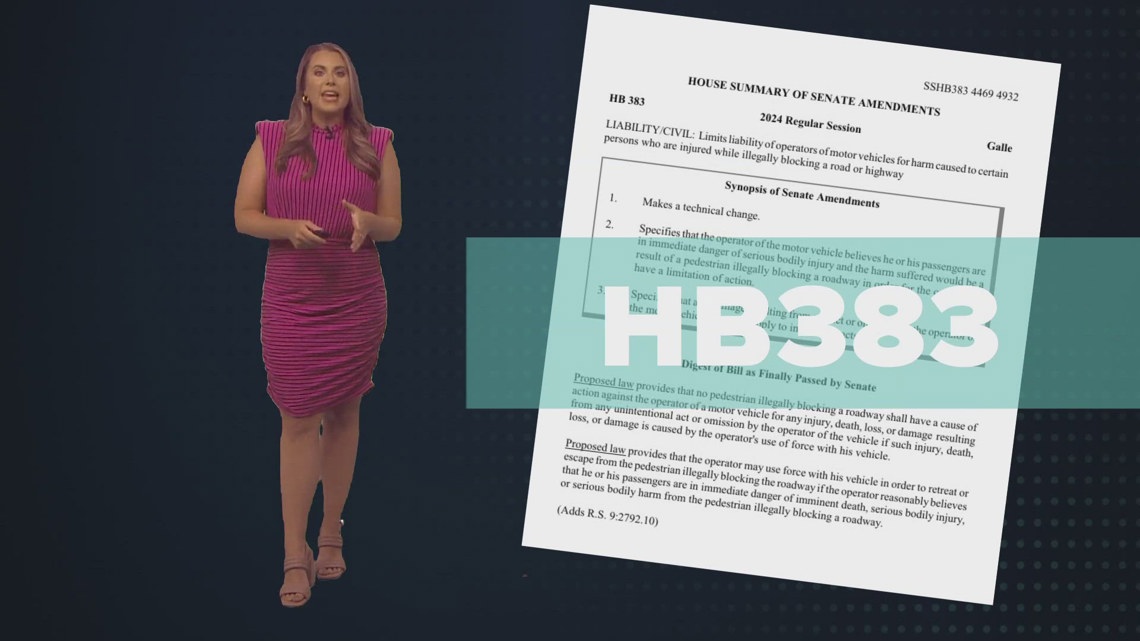RA2lover
- 19 Posts
- 73 Comments

 1·6 months ago
1·6 months agoEnergy recovery was already doable with traditional actuators through BEMF generation, so the only thing this has going for it is static torque.
The only way i’m seeing this doing things at a fraction of the cost is by enabling the use of a smaller motor and repeatedly winding each spring before doing a task requiring more effort. At that point, why not just use a linear motor and even more clutches to do that winding instead of having to move the entire arm?

 1·8 months ago
1·8 months ago“Researchers in Malaysia have the impression that you pay to publish in open-access journals, which is associated with predatory journals. I do not want the quality of my work to be judged like that,” says Sivapragasam, who is now a master’s student in science communication at the University of the West of England in Bristol, UK.
even Nature’s parent company wants payment for open-access publishing.
Also open-materials used to be the norm until the Harvard mouse patent came in and others following put the whole thing into jeopardy.
QUIC is already ~30% of HTTP traffic. That’s enough to not make UDP use stick out as suspicious.
The IP storage also doesn’t have anything to do with Tor guard nodes - in a VPN-before-Tor scenario, the guard nodes would only see the VPN server’s address, whereas in a Tor-before-VPN scenario, the VPN server would only see the exit node instead, which remains unchanged throughout the time a connection is established. If establishing a new connection instead, you have to negotiate keys for that new connection, with the previous connection’s keys not being used. The VPN server would only see connection data for the 2 exit nodes.
I watched it and continue being retarded, apparently.
The concerns of “using UDP instead of TCP” and “Connections need to be kept in memory until they time out” look like nothingburgers to a layperson, which isn’t helped by technical inaccuracies such as the conflation of multithreading with multiprocessing.
Checking again, it’s now returning a 500 with a
{"msg":"Error in store"}json response.
Interestingly, that instance’s modlogs have a post purged from this community 3 hours after the top level comment being sent. Does purging still keep images hosted?

 4·1 year ago
4·1 year agono, the tampermonkey scripts patch the interface locally on the client’s side.

 2·1 year ago
2·1 year agohttps://burggit.moe/comment/64787 has implementations for both as tampermonkey scripts.

 2·1 year ago
2·1 year agosadpanda has a tor hidden service but it has an annoying captcha.

 1·1 year ago
1·1 year agoThere’s actually not that much that can be done to protect against collapse during the transition period as the developed world already depends on 3 major things, none of which would have good workarounds during a transition:
- Electronic communications - necessary to make global shipping, banking and government systems function
- Global shipping - currently heavily subsidized by the US navy’s military presence, though other nations such as china are starting to invest further on theirs.
- Cheap energy - The Energy Trap explains the problem much better than i can, but basically energy needs increasingly more energy to obtain and societies haven’t done nearly enough preparation against this.
The only viable workaround for the first 2 is avoiding WW3. The third one could be worked around by using nuclear fission as a last-chance energy loan to finance a full-scale energy transition towards renewables(or praying for a hail-mary in experimental fiends such as hot fusion or lattice confinement fusion). The opportunity windows for all of these are quickly disappearing and may be nonexistent in some regions already.
There are other global-reliance systems which at least have some potential workarounds (such as the networks of debt), but overall they’re smaller concerns compared to these, at least in the immediate-to-medium term.
The main other major concern i have in the non-global category is subversion of the government structure, which i tried to harden the government system against by avoiding the use of representative-based democracy and by requiring laws to affect everyone equally, as existing governments have demonstrated distributing power, even among a few thousands of people, still isn’t sufficient to prevent corruption.
The goal behind the waiting period before ending autocractic rule was having enough societal progress happen that enough people have enough of Maslow’s hiearchy covered to protect enough against this subversion happening on the millions-of-people scale. Without this progress in place, masses would likely vote themselves increasingly more leading to economic collapse.I couldn’t find a way to get rid of the electronic communications demand. The implementation of the capital tax, UBI and direct democracy voting systems need too much data input/storage/output (roughly estimating within an order of a terabyte per year) to be feasible without that, even though the computing could be doable on government-operated computers (ranging from vacuum tubes to micromodules in the scale of integration / miniaturization - electromechanical and below is definitely out of the question).
Despite the problem of reliance on the above, post-scarcity doesn’t actually need a global supply chain - having one just makes it a hell of a lot easier to achieve. Rather, post-scarcity only needs enough productivity to beat society demands on voluntary mass unemployment, and this has already happened on some areas such as agriculture through synthetic fertilizers (increasing production) and large-scale mechanization (decreasing labor requirements). This completed the last requirement in the biological step of Maslow’s hierarchy at the cost of limiting crop variety - most of the bulk production is now on corn, rice, wheat and potatoes, all of which are susceptible to climate-change-induced-collapse.
Besides increasing production and decreasing labor requirements, other means to achieve post-scarcity are decreasing society demands (which has historically been done through practices such as senicide and other targeted forms of social/ethnic cleansing, though i believe can be avoided at the current technology levels), and increasing voluntary employment. These last two methods were a significant part in the elaboration of the principles behind my top-level comment’s plans, as they’re the major parts capitalism has failed to focus on.

 3·1 year ago
3·1 year agoI’d try to remain a benevolent dictator for life with the goal of transitioning to a different government structure which i think is better suited to a post-scarcity economy, with the main principle of governance being an extreme and immutable enforcement on everyone having equal access to information and rights/duties under the law. This would require a gradual phaseout of A LOT of things, such as:
- Fractional reserve banking
- Information classification
- Enforceability of legal waivers
- Intellectual property
- Corporate veil and potentially even personhood
- Progressive income taxation
- Class-specific, Gender-specific, Religion-specific and potentially Age-specific legislation
- Special-purpose computing
- RF spectrum licensing
Government office positions would follow technocracy principles, but act in an advisory role.
Legislation would be done though some variation of quadratic voting, with proposals costing more voting power than a family could accrue in their lifetimes with the intention of minimizing voter fatigue as much as possible. Voting power transfers should be possible, but only in one-to-all scenarios, such as pooling it towards a legislation proposal, maintaining a specific legislation active, or redistributing voting power so as to increase the majority opinion’s voting power in a specific vote. Vote duration would be extended when voting power is spent against the consensus in order to mitigate the impact of last-second coordinated voting.
Taxation would change to a tax on a constitutionally-limited portion of capital, and the entirety of land value and externalities. This is necessary in order to ensure everyone fair access to opportunity, as the upcoming automation revolution will bring the cost of labor(and its bargaining power) to zero, with the only remaining factors to production being capital and land. Capital can be increased, but land can’t - so the country would have to make the most of its land and taxing its entirety would (per georgist principles) give it an incentive to be used for efficient and productive purposes. The capital tax would be distributed evenly to every citizen as currency. Public companies could pay their tax by issuing new shares, which would also be evenly distributed to citizens. Land taxes would be used to improve the land, ensure deterrence against foreign invasion, and run the government.
The goals behind this are removing as many roadblocks to progress as possible, while providing everyone the ability to improve the country’s progress (and most importantly, their own progress) and be rewarded for doing so.
Autocratic powers would be necessary during the entire transition period, and then 1-2 generations where the country would hopefully show significant improvement over other countries and itself to convince everyone the government system is better than the existing alternatives and should be kept that way.
Who am i kidding, all of this would realistically get me sanction-blockaded and gaddafi’d by external actors within a year.

 3·1 year ago
3·1 year agoJust ask for an IFDIAPHMCT chef and your wife won’t need to worry about cleanup either!

 5·1 year ago
5·1 year agoThese are shown on rotation as donation rewards, so i’m assuming something went wrong on the host’s side.

 7·1 year ago
7·1 year agoLinux already has support for this, but it still has multiple limitations such as requiring multiple CPUs or including a hard limit for how many CPUs can be installed.
Assuming a consumer use case (single CPU socket, no real-time requirements) the easiest approach would be including an additional soft-off power state (S2/S3, but also setting the CPU into G3 and isolating things such as RAM), a way to prevent wake-up while the CPU is not connected, and a restart vector that lets the OS tell applications a CPU has been changed to let them safely exit code dependent on feature flags that may not be present. TPMs stay on the removed CPU, so anything relying on their PCRs gets hosed.

 2·1 year ago
2·1 year agoIt’s already achievable with current workflows. The only missing tool is a censorship detection/marking neural network.
As far as i know, no one has worked on this, but the problem doesn’t require the network to be particularly large or costly to train. Rather, the problem is in the lack of a readily-available dataset to train it.
You could build this sort of dataset by gathering a few hundred censored and uncensored releases of a given JAV / h-anime, then running a difference filter on the censored and uncensored versions. The availability of censored/uncensored releases seems to be much greater for JAV, but i can see how a model trained exclusively on JAV would potentially have issues if used on h-anime.After this network is trained, the rest would be using it to predict which regions on a given frame have been censored, and then use that as an inpainting mask for an existing image generation model.
The inpainting approach would allow the inpainting network to be changed as developments on temporally-stable image generation improve.
How does it scale up compared to stonetoss?
Major japanese h-game development studio.
Was behind titles such as RapeLay, Artificial Academy, Koikatsu, Honey Select and AI Shoujo.












The premise thrown to those economists is slightly different - that AI is more productive than a human at everything, but not necessarily cheaper, then sends their different interpretations, which i’ve ended up summarizing as:
Noah Smith: Compute will remain limited, so it’ll be directed at whatever is most profitable.
David Autor: AI can make the big-bucks jobs available to everyone, but they still need to Git Gud and figure out how to harness AI for them… Until everyone does. Pray “everyone” gets small enough by then so there will still be enough bucks left to live.
Daron Acemoğlu: Rest easy. AI won’t cover everyone’s jobs any time soon. Things will still suck when it does, though.
Ethan Mollick: AI won’t cover all jobs, but it’s about to cover all the “good” jobs. I don’t want to think what happens next.
Noah Smith on the earlier comments: Society will hopefully sort itself out and still leave humans “some” role. Relax.
Pascual Restrepo: You’ll still have “some” role, buuut it will become irrelevant anyway as AI will play a colossally larger role in the overall economy. Pray AI’s profits get distributed to everyone.
I think all of this misses the point completely. Compute can still be limited, but i think it’s more likely to happen through the supply-demand curve. Even if it remains expensive forever, there will likely be a point where the value of AI will equal its compute cost - once that is reached all AI jobs pay the same per compute time AI spends on them. Under the comparative advantage umbrella, the best-paying jobs for a human would turn out to be the jobs AI is the most inefficient at relative to the human regardless of whether they’re fullfilling to the human or not. but this still misses a much bigger problem.
Production needed land, labor, and starting from a certain technology level, capital. There used to be a social balance here in that everyone had their own labor and society always managed to figure out the price they’d sell their labor for - even if that price was different over time and over different societies, they’d still manage to sell it anyway because there was someone willing to buy it in the first place.
With AI, capital can now become labor instead of only amplifying production per labor. The industrial revolution was merely an inflection point where the amplifying factor of capital made labor without an amount of capital out of reach for most individuals uncompetitive. The ARA revolution is merely an inflection point where capital is making human labor uncompetitive.
On old societies, everyone had access to enough land to survive(or thrive) on their own labor with a capital multiplier small enough to be achievable by oneself - you could sell the labor to yourself and get a more enjoyable life in exchange. As societies got larger, the land available per individual got smaller, but capital could still allow for success. People with large amounts of land/capital figured out they could get more by lending their land/capital to others in exchange for labor, and society could figure out the exchange rate for which they were willing to trade those because labor was scarce.
ARA is bringing a post-scarcity economy, but the post-scarcity is coming to labor first, society has grown large enough that there’s not enough land for everyone to survive under their own labor without access to capital, and the people with land/capital now have enough that they don’t need to buy labor anymore. Worst of all, they’re now worse off by letting others labor with their resources for free, because the cost to keep them alive is now higher than the benefit their labor would bring to them. Society doesn’t like this, but what can it do about it?
tl;dr: George was almost right.